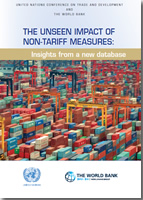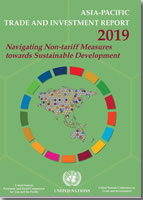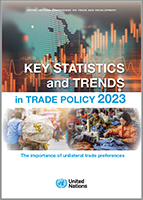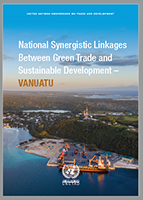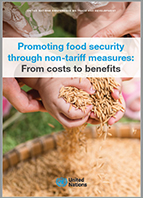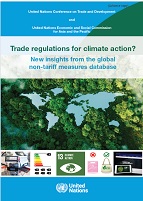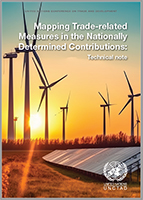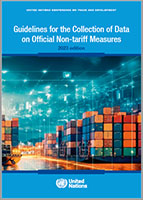Our research seeks to raise transparency and generate evidence-based insights on NTMs for policymakers, trade negotiators and researchers. This will help them to use NTMs in a way that carefully balances the reduction in trade costs against the preservation of public objectives.
Featured Research
The Unseen Impact of Non-Tariff Measures: Insights from a new database
This paper presents descriptive statistics and analysis using the new TRAINS NTMs database showing the prevalence and associated trade costs of NTMs.
Asia-Pacific Trade and Investment Report 2019
This Report develops a methodology to measure the link between Regulations and Sustainable Development and shows how strong NTMs and SDGs are linked in some countries.
Research by Topic
- The Impact of NTMs on the Trade of Developing Countries
-
NTMs represent a hurdle for trade, especially for exports from developing and least-developed countries and small firms.
-
The G20 countries' regulatory frameworks and the corresponding non-tariff measures alter relative competitiveness to the advantage of exporters that are capable of efficient compliance with NTMs, therefore penalizing exports from LDCs. (Nicita and Seiermann, 2017)
-
The European Union's SPS measures reduce lower income countries’ agricultural exports by about 3 billion $US, or about 14 percent of their agricultural exports to the EU. (Murina and Nicita, 2015)
-
Each additional SPS measure the EU imposes on a product reduces imports of this product by 3 per cent. For imports from African LDCs, the impact is almost 5 per cent. (Penello Rial, 2015)
-
In the case of Peruvian firms exporting to member countries of the Latin American Integration Association (LAIA), large firms are found to benefit from the implementation of NTMs and in particular Technical Barriers to Trade and Pre-Shipment inspections measures at the expense of smaller firms (Fugazza, Olarreaga and Ugarte, 2017)
-
- Potential Gains from Tackling NTMs: A New Frontier in Trade Policy
-
Reducing the negative effect of NTMs on developing and least developed countries' exports can have a higher impact on trade flows than reducing remaining tariffs. Therefore, NTMs should be regarded as the "new frontier" in trade policy.
-
Global averages of ad-valorem equivalents (AVEs) for all NTM types combined vary between 5 and 27 per cent across sectors, with the highest AVEs in the animal and vegetable sectors. (Cadot et al, 2015)
-
Eliminating the distortionary trade effect of G20 NTMs on LDC exports would increase LDC exports by about 23 billion US$, or around 10 per cent. This is more than twice of what could be achieved from cutting all G20 tariffs for LDC exports to zero. (Nicita and Seiermann, 2017)
-
NTMs affect sectors of importance for developing countries differently. For example, products of the fish sector are more affected by NTMs than other sectors, in particular by sanitary and phytosanitary (SPS) measures. (Fugazza, 2017)
-
- How to Design Smart Regulation
-
Policies to reduce the negative effect of NTMs on trade and increase the competitiveness of developing and least developed country exporters include:
- fostering regulatory convergence within regions
- adopting international standards and reviewing NTMs (importers)
- providing Aid for Trade and technical assistance, at the bilateral and multilateral level, to help exporters from lower income countries increase their capacity to comply with NTMs in export markets.
Estimations for SADC and Mercosur have shown that regulatory convergence reduces the negative impact of technical measures (SPS and TBT) on trade flows. Regulatory convergence between trading partners could thus lead to substantial increases in trade and welfare. (UNCTAD 2015, UNCTAD 2017).
Deep trade agreements, which tackle regulatory and behind the border issues, reduce the difficulties low-income country exporters have to comply with SPS measures in the EU. These agreements usually incorporate specific clauses on SPS measures with the purpose of either harmonization or mutual recognition of standards between the PTA members as well as technical assistance programs. (Murina and Nicita, 2015)



